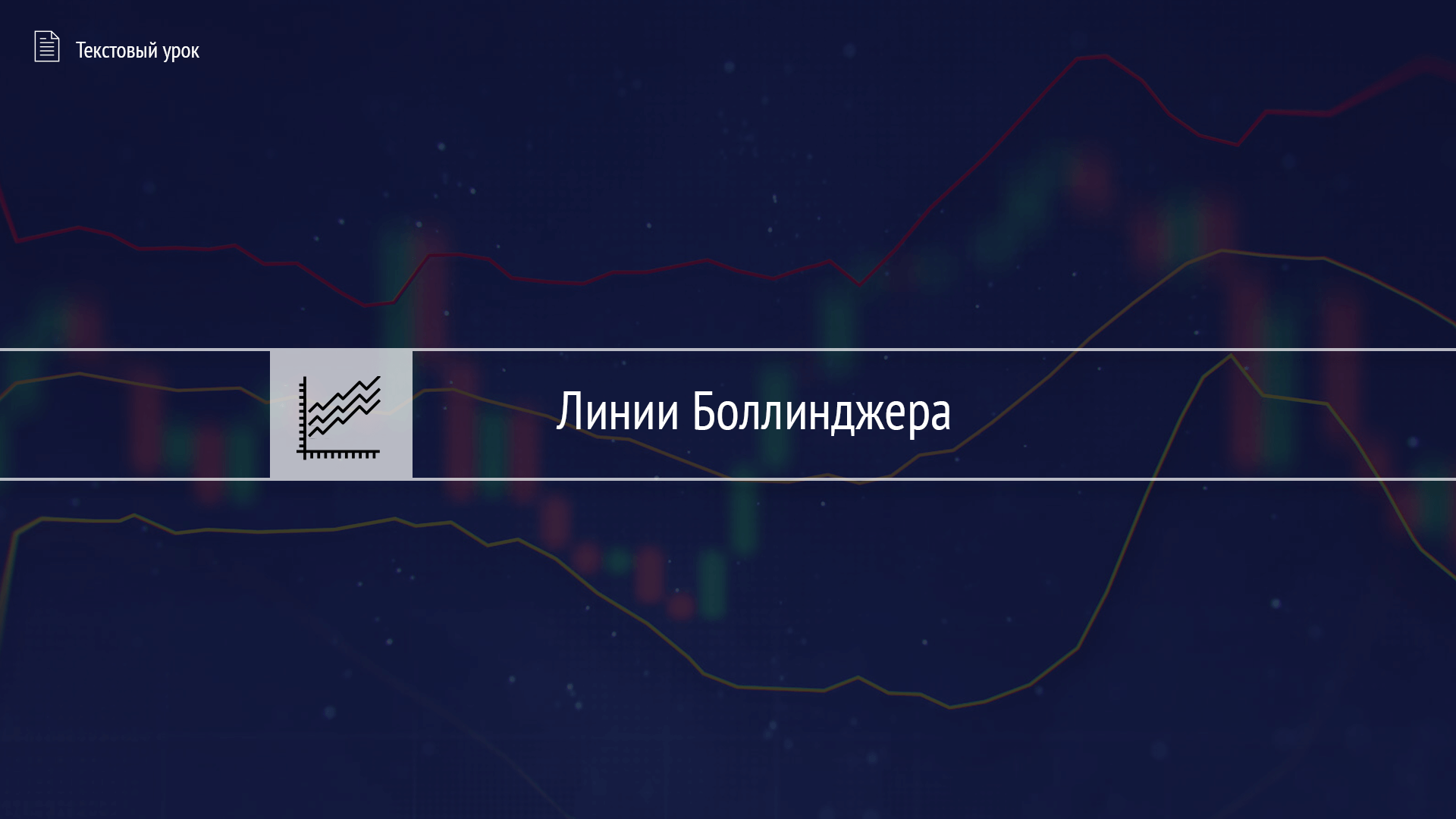Индикатором линии Боллинджера называют осциллирующий индикатор, который необходим для того, чтобы измерить волатильность рынка.
Он даёт возможность оценить высокую или низкую цену в сравнении со скользящей средней за последний период времени. Кроме того, он помогает предсказать рост или падение до его уровня. Такая информация позволит понять – нужно продавать или покупать актив.
Линии Боллинджера демонстрируют перепроданные и перекупленные рынки
Полосы Боллинджера составляют три главные линии (или полосы).
Полоса по центру соответствует простой скользящей средней цены. А вот нижняя и верхняя показывают уровни, на которых цену можно посчитать низкой или высокой в отношении к скользящей средней за последний промежуток времени.
На картинке снизу продемонстрированы полосы Боллинджера на графике цены. Большинство ценовых движений чаще находится в пределе полос. Это помогает чаще их использовать для того, чтобы предсказать развороты на рынке.
Перекупленность
В момент достижения ценой верхней полосы актив будет торговаться по высокой цене и будет считаться перекупленным. Поэтому в такой момент вы можете продавать его и ждать падения цены в будущем к центральной полосе, которая является скользящей средней.
Перепроданность
В момент достижения ценой нижней полосы актив будет торговаться по низкой цене и будет считаться перепроданным. Поэтому в такой момент вы можете покупать его и ждать повышения цены в будущем к центральной полосе, которая является скользящей средней.
Но вы всё равно должны быть осторожными, ведь то, что цена один раз дошла до нижней или верхней полосы, не будет значить её разворот. Вам нужно больше данных (например, свечные фигуры, другие индикаторы), чтобы разворот был подтверждён до открытия вами сделки.
Расстояние между полосами
По расстоянию между нижней и верхней полосой можно также определить волатильность на рынке с помощью полос Боллинджера. Малое расстояние означает низкую волатильность, а большое – высокую.
На графике выше в синей зоне можно увидеть прижатые друг к другу полосы, что будет значить невысокую волатильность. Дальше идёт зелёная зона, где цена стала более волатильной и начала подниматься, при этом расстояние между полосами тоже растёт.
Изменение настроек
Полосы Боллинджера имеют 2 параметра, с их помощью можно изменить поведение данного индикатора. Этими параметрами являются стандартное отклонение и количество периодов.
Изменение периода
Полосы имеют стандартное значение в 20 свечей или 20 периодов. Период имеет отношение к временному интервалу, а на основе движений цены за этот интервал будет рассчитываться индикатор.
Меньшее количество периодов
Индикатор будет быстрее реагировать на изменения, если будет использоваться меньшее количество периодов. В результате нижняя и верхняя полосы станут не такими ровными. Цена будет всё чаще прорывать полосы и позволять торговать. Правда вместе с этим будет расти число ложных сигналов.
На графике ниже значение равняется десяти и происходят частые прорывы нижней и верхней полосы ценой.
Большее количество периодов
Индикатор будет не так быстро реагировать на изменения, если используется много периодов. В результате этого нижняя и верхняя полосы стают ровнее.
Цена не так часто будет прорывать нижнюю и верхнюю полосы и даст меньше сигналов, но любой из них будет достовернее.
На картинке ниже продемонстрированы полосы со значением периода 40, что больше стандарта в 2 раза. Если сравнивать это с прошлым графиком, то можно увидеть, что расстояние до внешних полос намного больше, а цена прорывает их намного реже.
Изменение стандартного отклонения
По умолчанию значение стандартного отклонения полос Боллинджера равняется 2.
Стандартное отклонение показывает, как полно графические данные нормального распределения скользящей средней будут учитываться в индикаторе полос Боллинджера.
Если увеличить стандартное отклонение, то можно повысить расстояние от полос до центральной линии. В результате больше движений цены окажутся между ними.
Значение 1 здесь будет показывать, что 68 процентов движений цены заключены внутри полос. А вот повышение отклонения до 2 будет увеличивать расстояние от центральной линии и менять показатель до 95 процентов общих движений цены.
Параметры располагаются в левом углу сверху графика и чаще показаны как 20, 2 под стандартными настройками.
Повышение и понижение стандартного отклонения
На графике ниже стандартное отклонение изменили на 1.9.
Нижняя и верхняя полосы теперь находятся ближе, а цена прорывает их чаще. Но при повышении стандартного отклонения (например, до 2.1) произойдёт обратная ситуация.
На графике ниже показан другой случай, где стандартное отклонение равняется 2.5, а цена прорывает полосы не так часто.
Если повысить стандартное отклонение у полос Боллинджера, то можно успешно менять уровень экстремума, которого должна достичь цена для того, чтобы прорвать полосы.
Цена будет реже прорывать полосы при высших настройках стандартного отклонения. Зато такие настройки могут дать более достоверные сигналы.
